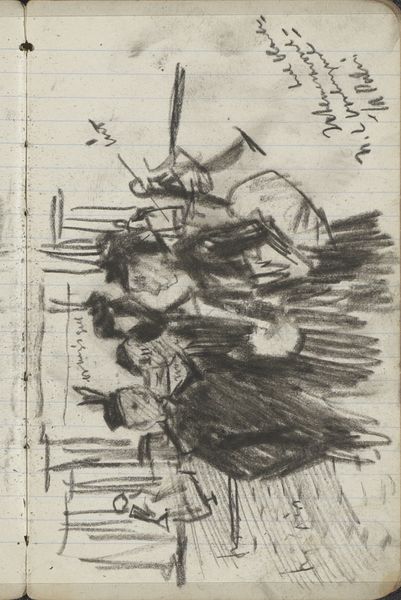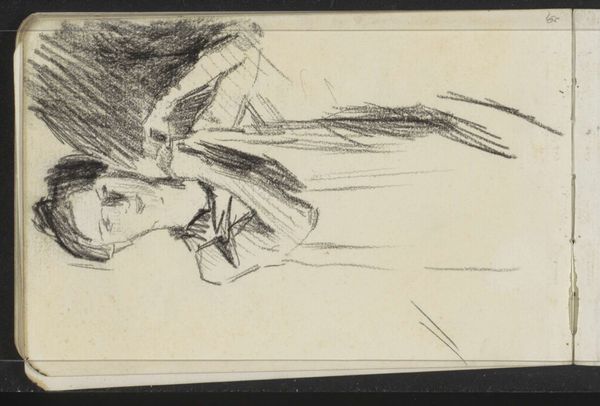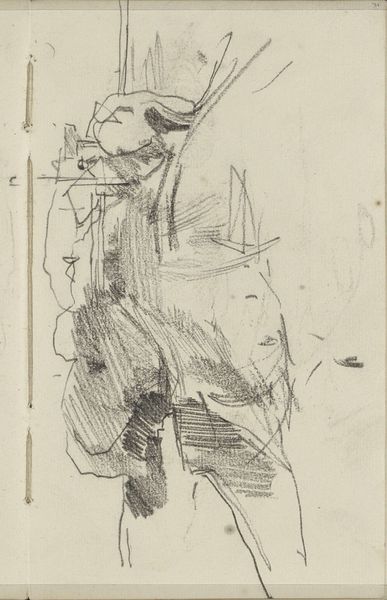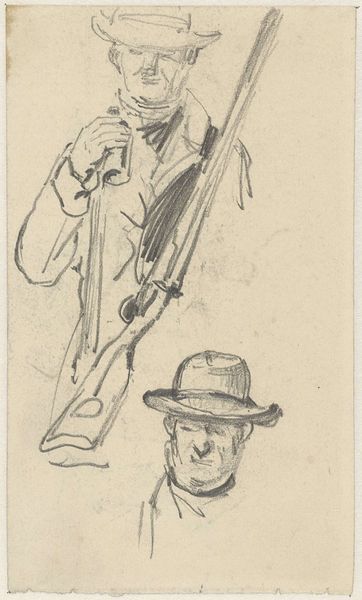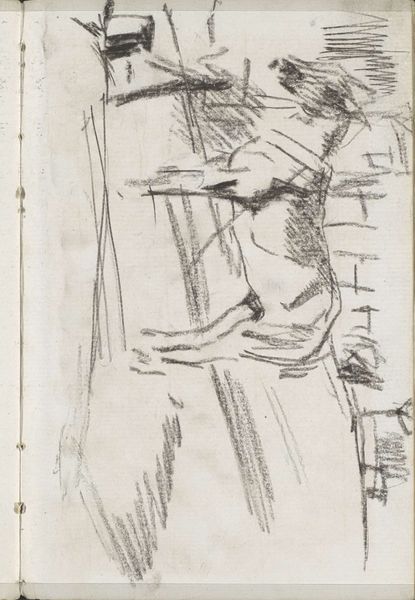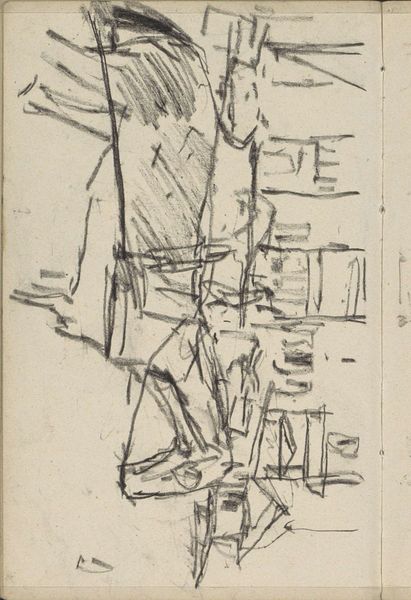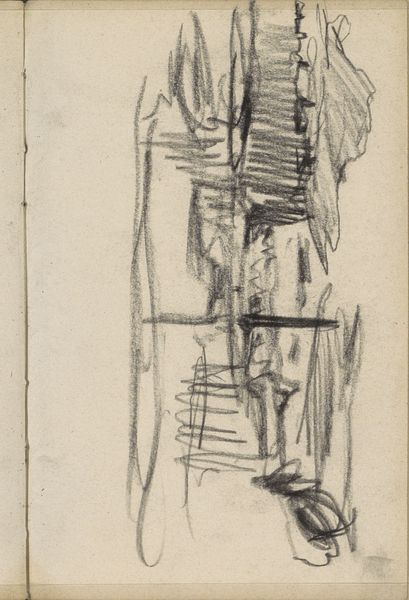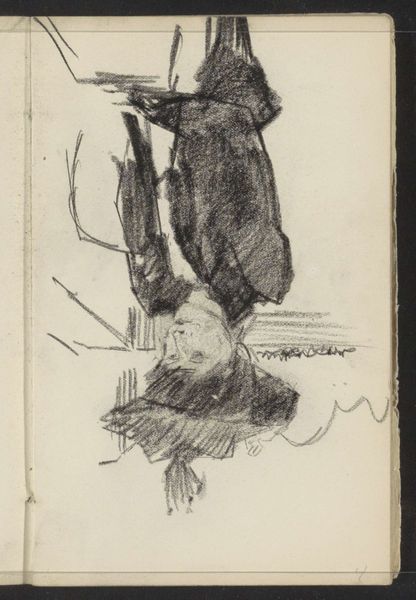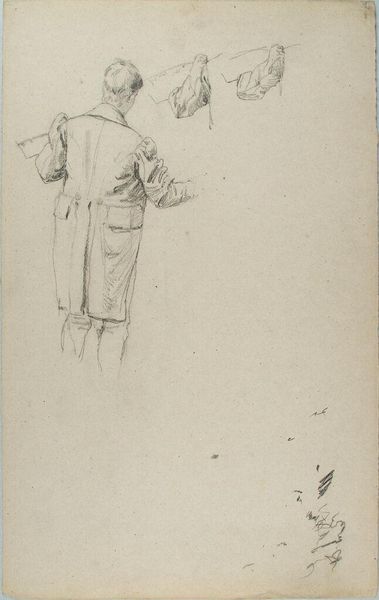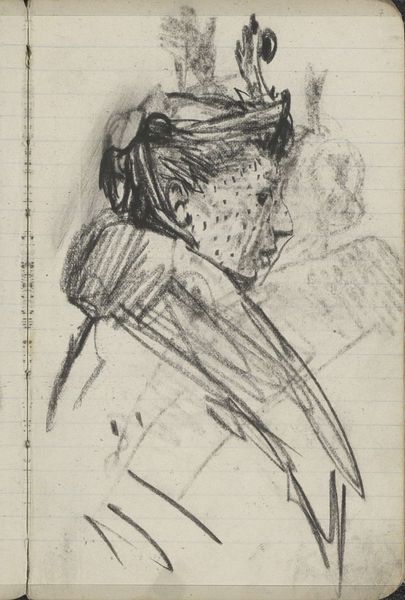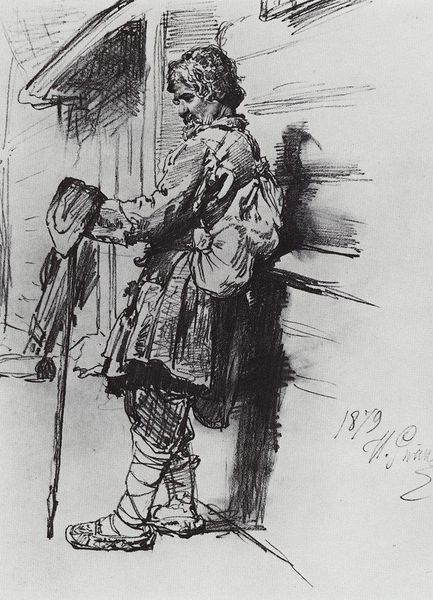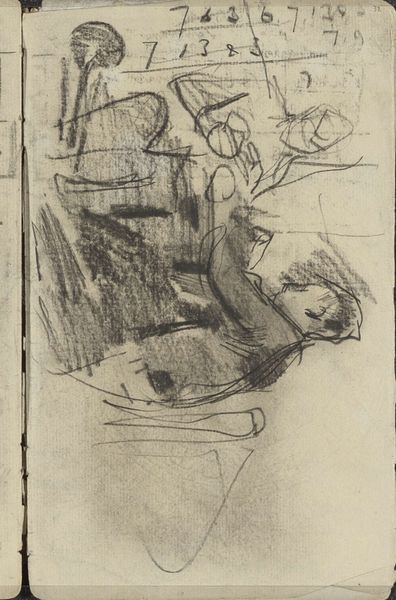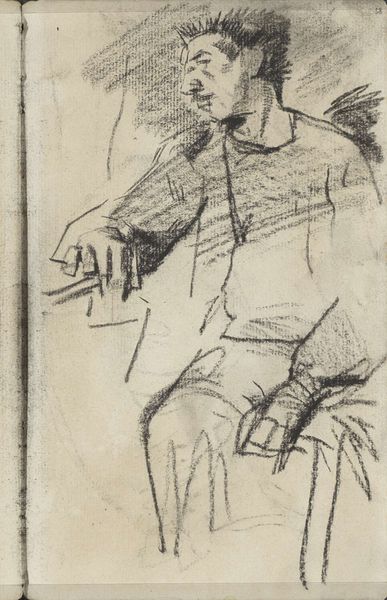
drawing, pencil
#
portrait
#
drawing
#
pencil drawing
#
romanticism
#
pencil
Dimensions: 6 1/4 x 3 7/8 in. (15.9 x 9.8 cm)
Copyright: Public Domain
Editor: This is John Neagle’s pencil drawing of Thomas Sully, dating to 1831, and currently residing here at the Met. It’s a rather faint image, unfinished in a way, and makes me wonder about the story behind it. What can you tell me about it? Curator: From a materialist perspective, this drawing gives us a peek into the artistic process of the 19th century. Consider the pencil itself: its production relied on mining graphite, shaping wood, and the labor of countless individuals. Editor: That's interesting. I hadn't thought of it that way. Curator: The very act of sketching – of rapidly capturing Sully's likeness – points to a specific kind of artistic labor, one that values immediacy and skill. Note how the sketchy lines create form so efficiently; how might the context of portraiture commissions influenced that skill? Editor: I suppose he needed to be fast, efficient... Curator: Precisely. Furthermore, think about who had access to materials like paper and pencils at this time. Art production wasn't a democratized process; privilege shaped artistic practices and opportunities. Does that change how we see this image of a privileged artist, Sully, made by another, Neagle? Editor: That definitely complicates my understanding. It highlights the socio-economic structure embedded in art making itself. It shows more than just the end product. Curator: Indeed. It emphasizes the significance of materials and economic background as fundamental layers in the interpretation of an artwork. Even a simple pencil sketch reveals the network of social relations and production that underpinned the art world. Editor: This conversation truly shifted my initial perception of this work from a simple sketch to a product of historical means.
Comments
No comments
Be the first to comment and join the conversation on the ultimate creative platform.
